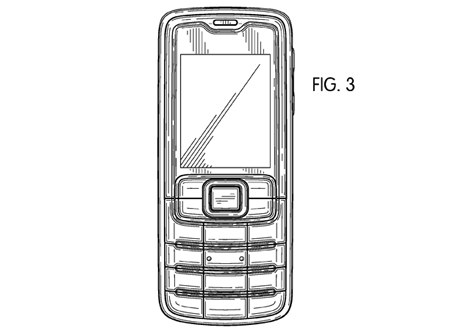Nokia’s Mobile Patents Are Its Last Line of Defense
Nokia may have failed to develop a smart phone that challenges either Apple or Android, but the once-dominant Finnish company—which last week announced it would lay off 10,000 workers and shut two R&D facilities and a manufacturing site—has a rich store of intellectual property that may determine its future.

The power of Nokia’s patent portfolio was demonstrated in its 2009 suit against Apple, in which it claimed that the iPhone maker had violated 46 Nokia patents, including ones covering wireless standards, antennas, cameras, click wheels, and touch-screen controls. Apple agreed to settle last year for an undisclosed cash payment and ongoing royalties. Nokia gets more than $600 million every year in revenue related to its patents.
The explosive growth of the smart-phone market means mobile patents are particularly valuable these days. Major players are increasingly going to court with one another over alleged infringements. And patents have proved to be gems amid the wreckage of failed companies; bankrupt Nortel’s 6,000 patents were liquidated for $4.5 billion last year to an Apple-led consortium of tech companies. Google spent $13 billion on Motorola Mobility, gaining 17,000 patents.
Over the last 20 years, Nokia has sunk more than $50 billion into R&D and made several acquisitions, producing a war chest of 30,000 patents, including 11,000 filed in the U.S. “The quality of the patents is one of the best in the industry,” says Chetan Sharma, a wireless analyst and consultant in Seattle.
Alexander Butler, executive vice president at IPVision, an intellectual-property consultancy in Cambridge, Massachusetts, says that measured against what Motorola’s and Nortel’s patents sold for, and taking into account the quality of Nokia’s patents, the Nokia storehouse could be worth more than the company’s market value, which stood at around $9.6 billion at midday Tuesday.
Nokia was long a leader in mobile computing. The pioneering products it has developed over the years include the first camera phone, the first mobile phone with a QWERTY keyboard, and the first phone with video calling.
Indeed, on its website the company presents a long string of novel commercial products it has developed in the past 30 years.
Nokia’s most-cited patent—and therefore one of its most valuable—was issued in 1992 for a “method for mapping, translating, and dynamically reconciling data.” It has been cited by other patents 300 times, a sign of its importance in the field. In essence, this technology is what we use today to align our digital calendars on various devices. Nokia obtained that patent through an acquisition.
However, Butler cautions that hardware patents, one area in which Nokia is particularly strong, are decreasing in importance over time. “They don’t have as much quantity around interface and software patents, which is where a lot of the value is today,” he says.
But the standards-related patents should remain fundamentally important, says a Nokia spokesman, Mark Durrant. Nokia was the first to market with a GSM phone and has many patents in that area.
The question is how well Nokia plays its hand from here. The company has sold patents 20 times in the last five years while getting more aggressive in court. “As our actions have shown—though litigation is not our preferred option—we will take whatever steps are necessary to protect our IP from unauthorized use by others,” Durrant says.
In fact, Nokia last month filed lawsuits against HTC, RIM, and Viewsonic in the U.S. and Germany for allegedly violating 45 patents covering antennas, power management, app stores, data encryption, the retrieval of e-mail attachments, and more.
Whether it comes through licensing, sale, or litigation, patent-related cash flow could be vital if Nokia isn’t to follow Nortel to bankruptcy court, says Alexander Poltorak, chief executive of a patent consultancy called General Patent in Suffern, New York.
“Nokia will be very mindful of Nortel’s experience, and I think they are going to do everything they can to monetize their patents,” Poltorak says. “They are well aware of the value of their patents, so they are going to accelerate their patent enforcement programs and sell some of their portfolio to raise cash. I am optimistic that is going to work, because Nokia is a very patent-savvy company.”
None of this changes the fact that Nokia no longer dominates its industry. The focus is now on the company’s endgame. “Nokia has a ton of cash but pretty much a dismal future. Best bet is for someone strategic to buy the whole company—probably its current partner, Microsoft,” says Greg Aharonian, editor of a widely read patent newsletter. “Nokia will still die, but it least it can die serenely inside Microsoft.”
Keep Reading
Most Popular
Large language models can do jaw-dropping things. But nobody knows exactly why.
And that's a problem. Figuring it out is one of the biggest scientific puzzles of our time and a crucial step towards controlling more powerful future models.
The problem with plug-in hybrids? Their drivers.
Plug-in hybrids are often sold as a transition to EVs, but new data from Europe shows we’re still underestimating the emissions they produce.
Google DeepMind’s new generative model makes Super Mario–like games from scratch
Genie learns how to control games by watching hours and hours of video. It could help train next-gen robots too.
How scientists traced a mysterious covid case back to six toilets
When wastewater surveillance turns into a hunt for a single infected individual, the ethics get tricky.
Stay connected
Get the latest updates from
MIT Technology Review
Discover special offers, top stories, upcoming events, and more.